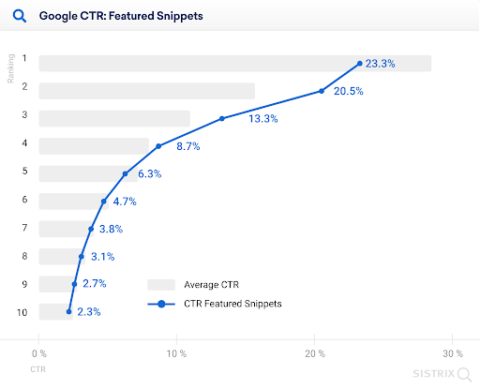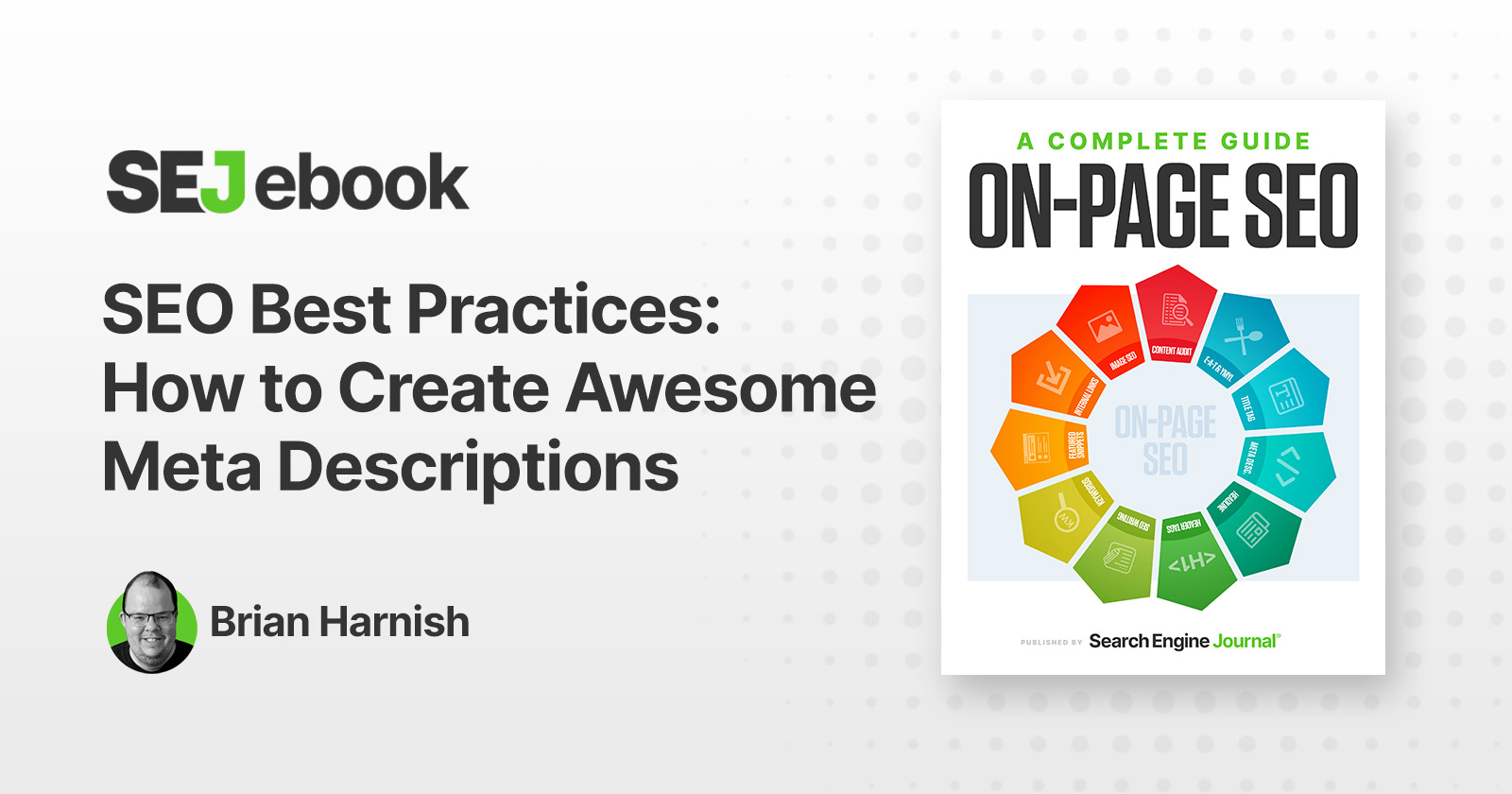Meta descriptions have always been an essential optimization. Even though they do not help rankings, they do help with other goals such as improving click-through rates by tempting people to click on your listing over others that may not be quite as interesting.
Meta descriptions are considered an indirect signal, in that they do not directly influence search rankings.
But does this mean that you should ignore them as part of your SEO efforts? Absolutely not!
Here, you’ll learn how to create awesome meta descriptions that help search engines understand your page’s content and inspire searchers to click through and visit your website.
What Is A Meta Description?
The meta description is an HTML tag that provides search engines and searchers a description of what the page is about. It is displayed on search engine results pages (SERPs) underneath the title of the page.
Meta Descriptions Vs. SERP Snippets
Some people mistakenly use the terms “meta description” and “search snippet” interchangeably.
Advertisement
Continue Reading Below
But meta descriptions and search snippets are two different things.
The meta description is an HTML tag that you control. You can create and optimize your own meta descriptions.
Search snippets are the descriptions Google shows for your webpages. It could either be the meta description you have created, or it could be something completely different. Google controls this.
Why wouldn’t Google use your meta description? Depending on the search query, Google may generate a description for your webpage that is entirely different from the meta description you created.
This is nothing new. Google automated this process many years ago.
According to a recent in-depth study performed by Yoast:
- Google rewrites many search snippets on its own, to help match the searcher’s query more accurately.
- In two-thirds of cases that they examined, Google used sentences from the first paragraph to create the search snippet. Of course, this doesn’t mean Google will do the same for your site, but the indication is there that an article introduction should at least consider whether it would make a good alternative to the meta description.
The distinction between meta descriptions and search snippets is an important one, especially when Google makes announcements – such as when Google expanded the length of search snippets (only to shorten snippets about six months later).
Advertisement
Continue Reading Below
Why Are Meta Descriptions Important For SEO?
As many other ranking factors have come into play, meta descriptions have become less impactful and are no longer used at all in ranking. In fact, Google confirmed in 2009 that while meta information had been used by search engines in ranking in the earliest days of Google, it had been devalued long before even then.
So how are they used today?
Meta descriptions can help drive clicks, traffic, potential conversions, and revenue by:
- Increasing a site’s CTR in the SERPs: There have been studies over the years that support the idea that well-written and properly optimized meta descriptions can increase your CTR. Sistrix released a report that showed when a SERP includes a featured snippet, the CTR for position one dropped an average of 5.3%, for example.
-
 Screenshot taken by author, December 2021
Screenshot taken by author, December 2021
-
- Higher quality traffic: The higher up in the SERPs you are, the more likely you’ll get clicks which in turn result in more higher quality traffic. Zero Limit Web revealed that 81.3% of searches resulted in a page 1 Google organic click. And the results from 6 to 10 only accounted for 3.73% of clicks.
- Potential conversions: Crafting a well-written meta description that is closely related to the topic of the page, is interesting to users, and is highly optimized for user intent can increase conversions from search to your site significantly.
What Is The Recommended Or Ideal Meta Description Length?
It has been considered a standard SEO best practice for years to keep meta descriptions at around 160-165 characters maximum (or 156-160 characters, depending on who you talk to).
The reasoning behind this is that this optimization helps to avoid the truncation of the meta description in the SERPs and as a result, helps to limit bounce rates.
Do your own testing. Find out exactly what works for your site.
7 Meta Description Writing Tips & Best Practices
Research Your Competitors
Regardless of your industry, SERP research will help you see what works for your competitors – and that’s who you need to beat.
Monitor relevant SERPs over the next several days, weeks, and months.
Assess exactly which meta descriptions appear in the top positions, where you want to rank.
To do SERP research effectively:
Step 1: Research The SERPs For Your Targeted Keyword
It’s easier said than done, I know. It can be time-consuming to manually go through every search result and identify what, exactly, is your competition’s kryptonite.
Advertisement
Continue Reading Below
The reason why we were looking at the competition is because usually, the competition implements techniques that are currently working.
Step 2: Research The SERPs For Your Competition And What They’re Doing
Here, you take a look at your competition and figure out exactly what they are doing for their brands.
Step 3: Put Them Together In A Spreadsheet, And Track Them
Using the SEO Quake Google Chrome extension, you can export Google SERPs to an Excel Spreadsheet quite quickly and efficiently. This will let you keep a running tally of your competition and track them easily and efficiently on a monthly basis, without enormous monthly costs.
Map Your Customer’s Journey
Identify your target audience’s optimal buying journey and what happens at each stage of the marketing funnel.
The marketing funnel can vary widely depending on your target market, so sharing an exact funnel to follow here would be fruitless.
Target and tailor your meta descriptions according to your findings.
Advertisement
Continue Reading Below
Use Your Brand’s Unique Tone And Style
Every brand should have a unique tone of voice, consistent with its brand identity; this is how the brand appears online to users.
Each meta description should be uniquely crafted and tailored to how that tone of voice amplifies itself across the brand’s ecosystem.
You wouldn’t use the same tone of voice for a corporate law website as you would for a daycare website, would you?
So why would you use a tone of voice that’s exactly the same from page to page?
The main benefit of tone of voice is that it reaches different personas targeting certain keywords.
By targeting personas with user intent and combining keywords with this research, it is possible to reach your target audience with a level of sophistication and optimization that truly resonates.
Include Keywords Your Audience Actually Searches On
Google continues to maintain that they don’t use keywords in the meta description for ranking purposes. But when you perform SERP research, what is it that you see? Highlighted keywords in the meta description.
Advertisement
Continue Reading Below
This is not conclusive evidence that Google uses it, but it is something that can draw your reader into the most relevant result that will satisfy their query.
If your meta description satisfies their intent better than any other result that appears, you’ll win the click.
Take Advantage Of Trending Social Headlines
As a connoisseur of social media, you’re most likely on the up and up in your industry when it comes to identifying exactly what’s trending and what isn’t passing muster for your audience.
Following influencer accounts and industry firms should already be a part of your strategy.
Taking it a step further, assess which topics are currently trending in your space and see what meta descriptions appear for the highest-ranking results.
Google Trends, BuzzSumo, and Trending Topics on Twitter are all good places to check and see what might be trending that’s relevant to your industry.
Target A Specific Search Intent
Generalized meta descriptions and hollow phrases such as “best widgets” and other sales-speak can turn off prospective customers.
Advertisement
Continue Reading Below
It is important to inspire confidence that your result is something that will satisfy their user intent for the query.
You want to speak about what your readers are really after, not attempting to persuade them into your own sales funnel.
Refresh Your Meta Descriptions On Older Content
Refreshing stale content on a website can be a boon for the site and is a great way to get new traction for older pages.
Also, by refreshing your meta descriptions, it is possible to get more traction from social media as a result. You can re-share and grab more visibility from older posts if you perform a systematic refresh of all of your meta descriptions.
Examples Of Great Meta Descriptions
So what does a great meta description look like?
Here are a few examples:
“Pain and suffering are very real to the victim in a personal injury case. Learn more about how to reduce discomfort from our personal injury attorneys in this latest blog post.”
Advertisement
Continue Reading Below
“By thinking clearly about your needs, it is possible to find a computer that will help you do all the things you currently love, and more. Our technicians explain.”
“What are you looking for in a widget? Our widget technicians can help you find the best one for your needs. These are the things you should look out for in widgets.”
Not every meta description type will work well for each industry. This is where testing, assessing your results, and making changes based on those results come in.
Tailor your meta description to the website and down to the page that is designed for your users. And always keep user intent in mind while integrating the optimizations above.
Optimizing Meta Descriptions Requires Striking A Balance
All of this has to be done while also observing character limits, proper branding and tone of voice, and targeted optimizations for specific pages.
It is a delicate balance that must be maintained while also interweaving common SEO elements.
Advertisement
Continue Reading Below
If there is only one thing you take away from this chapter, I hope it is this: always write your meta descriptions from the perspective of improving user experience and providing helpful information.
That’s what meta descriptions do best.
They will not help you rank higher in search, but can help you win more clicks from search by demonstrating to users the value that your page has to offer.
Image Credits
Featured Image: Paulo Bobita/Search Engine Journal
All screenshots taken by author
